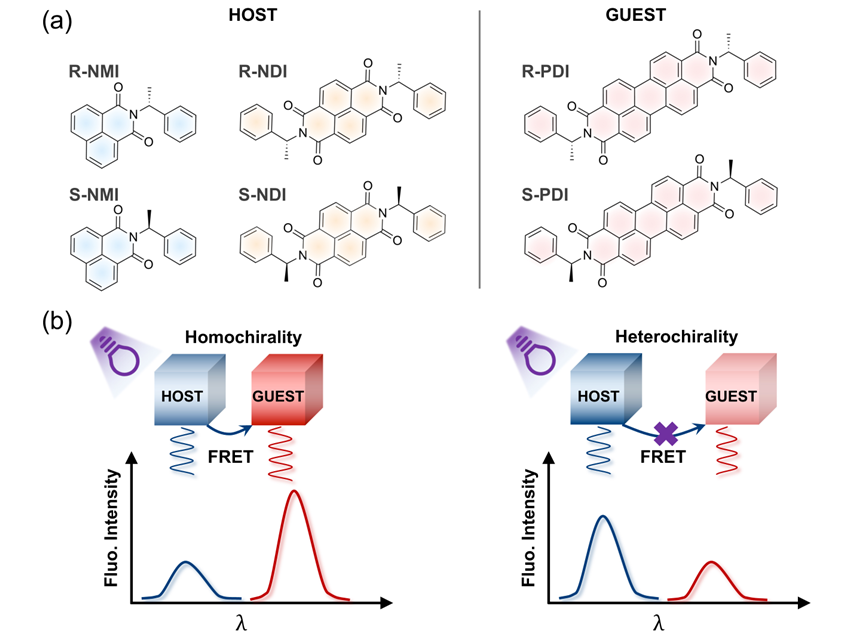Accurately distinguishing enantiomers is important in many fields, but creating a fast, solvent-free method for doing so remains challenging.
Tao Wang, Beijing Institute of Technology, Guoqing Zhang, University of Science and Technology of China, and colleagues have develop a chirality recognition strategy based on Förster resonance energy transfer (FRET). They validated a novel “homochirality-preferred” FRET approach for rapid chiral recognition of organic molecules in the solid state. This method uses chiral naphthalimide (NMI) or naphthalenediimide (NDI) as the host and chiral perylenediimide (PDI) as the guest, forming a non-covalent host–guest system.
The strategy enables fast, solvent-free, real-time discrimination of molecular enantiomers, overcoming limitations of traditional liquid- and gas-phase techniques. By leveraging chirality-dependent energy transfer, the system achieves efficient solid-state recognition: When host and guest molecules share the same chirality,their complementary configurations result in tighter local packing, reducing the donor–acceptor distance critical for FRET and enhancing fluorescence. In contrast, mismatched chirality restricts energy transfer and weakens luminescence.
Spectroscopic and kinetic analyses, supported by molecular dynamics simulations, confirm that homochiral combinations show higher energy transfer efficiency and stronger emission due to increased local molecular interactions.
According to the researchers, this innovative FRET-based strategy offers a rapid, solvent-free solution for solid-state chiral sensing, with potential applications in high-throughput screening, molecular diagnostics, and advanced material design. The work provides a valuable tool for chiral materials research and deepens understanding of how chirality influences molecular packing and energy transfer mechanisms.
- Achieving Chiral Recognition of Imide-based Fluorophores Through Förster Resonance Energy Transfer
Jing Chen, Biao Chen, Shikai Yu, Dongqing Lin, Guoqing Zhang, Tao Wang
Aggregate 2025
https://doi.org/10.1002/agt2.70172


